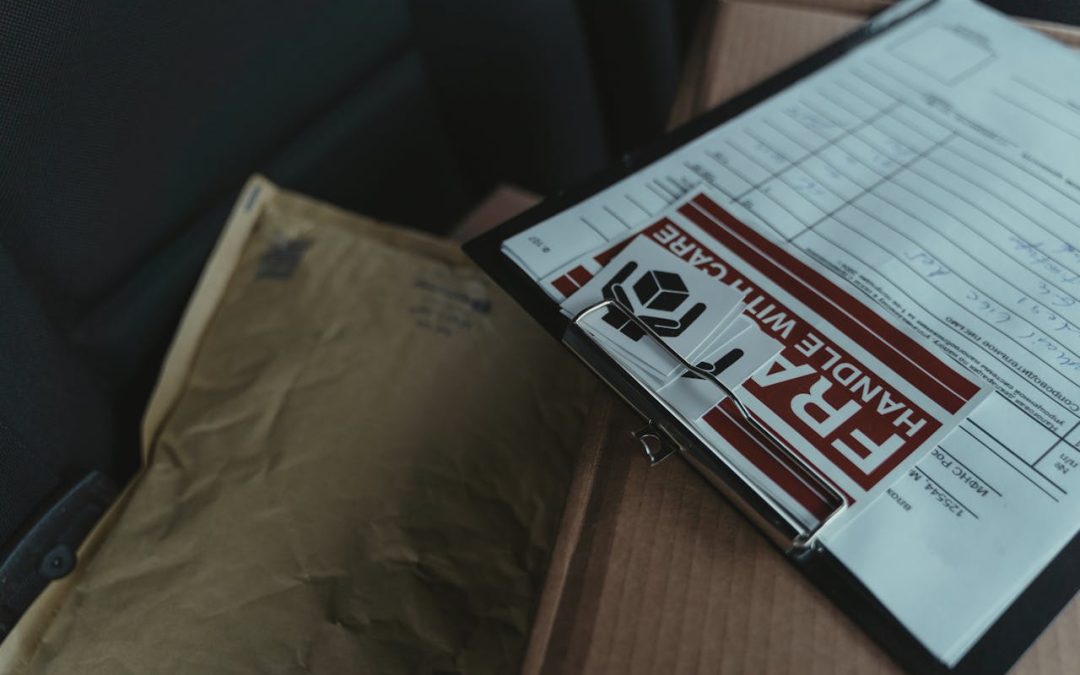In the fast-paced world of international shipping, precision and organisation are key. Whether you’re transporting high-value electronics, fragile items, or bulk commodities, one document plays a crucial role in ensuring seamless operations: the packing list.
A packing list is much more than an inventory sheet. It’s a cornerstone of transparency, compliance, and efficiency in logistics. But what exactly is a packing list, and why is it so essential to successful shipping? Let’s break it down step by step…
What is a Packing List?
A packing list is a detailed document that outlines the contents of a shipment. It provides a clear and concise breakdown of what’s being shipped. That packing list ensures that suppliers, freight forwarders, customs officials, and recipients all have the necessary visibility into the shipment’s details.
What Does a Packing List Include?
A typical packing list contains:
- Description of Goods: Detailed information about the items being shipped.
- Quantity of Items: The exact number of units in each package and the total quantity.
- Dimensions and Weight: Size and weight measurements of each package, including gross and net weight.
- Handling Instructions: Notes such as “Fragile,” “Keep Upright,” or “Store at Room Temperature.”
- Sender and Recipient Details: Names, addresses and contact information.
- Reference Numbers: Order numbers, invoice numbers or shipment IDs for tracking.
How Does It Differ From Other Documents?
While a commercial invoice focuses on the financial value of goods for billing and customs purposes, the packing list focuses solely on the physical details of the shipment. It’s also distinct from a bill of lading, which is a contract between the shipper and carrier.
Why Does a Packing List Matter?
When it comes to international shipping, accuracy isn’t optional – it’s essential. A well-prepared packing list serves multiple purposes:
1. Facilitates Customs Clearance
Customs officials rely on packing lists to verify that the shipment aligns with declared goods on the commercial invoice. An incomplete or inaccurate packing list can lead to customs delays, penalties, or even shipment rejections.
For example, imagine shipping electronics to a country with strict import regulations. Without clear item descriptions, customs could hold the shipment for further inspection, delaying delivery and incurring extra costs.
2. Improves Transparency
In a complex supply chain, multiple parties handle your shipment. A clear packing list ensures everyone – from warehouse staff to freight carriers – understands exactly what’s being transported. This transparency reduces the risk of misplaced goods or logistical errors.
3. Streamlines Operations
Accurate packing lists simplify the handling, tracking and storage of goods. For example:
- Warehouses use packing lists to verify incoming and outgoing shipments.
- Freight carriers use them to load items efficiently and ensure proper handling.
- Recipients check the packing list to confirm they’ve received all the goods.

4. Prevents Errors and Disputes
A detailed packing list minimises the risk of errors, such as missing items or incorrect quantities. If a dispute arises, for example, a customer claims that some items are missing, you have the packing list as a reliable reference to resolve the issue quickly.
Key Elements of a Packing List
Every packing list should include these essential details:
- Sender and Recipient Information: Include the full names, addresses and contact numbers of both the shipper and the recipient.
- Detailed Goods Descriptions: Be specific about the type of goods. For example, instead of “electronics,” specify “smartphones, model XYZ.”
- Quantities: Break down the number of units in each package and the total quantity.
- Weight and Dimensions: Include both individual package weights and total shipment weight, as well as dimensions for accurate space planning.
- Special Handling Instructions: Highlight requirements such as “Handle with Care” or “Keep Refrigerated.”
- Reference Numbers: Add order, invoice, or shipment numbers to ensure alignment with other documents.
Missing any of these elements can lead to confusion, delays or additional costs.

How to Create an Effective Packing List
An accurate and professional packing list makes all the difference in your shipping process. Here are some tips to create one that works:
1. Be Precise and Consistent
Use clear, detailed descriptions and avoid vague language. For example, instead of “clothing,” specify “10 white men’s cotton t-shirts, size M.”
2. Use Standardised Terminology
Customs officials and freight handlers might not understand industry-specific jargon. Stick to universally recognised terms to ensure clarity.
3. Ensure Alignment with Other Documents
Cross-check the packing list with the invoice, bill of lading, and purchase order to ensure consistency. Discrepancies between documents can cause delays.
4. Utilise Digital Tools
Modern shipping software can simplify the creation of packing lists. Many platforms offer templates that ensure you don’t miss any critical details.
5. Update the List When Changes Occur
If shipment details change, such as quantities or packaging, remember to update the packing list immediately to avoid confusion or errors.
Common Mistakes to Avoid
Even seasoned shippers can make mistakes when creating packing lists. Here are a few to watch out for:
- Missing Critical Information: Omitting weight, dimensions or handling instructions can lead to shipping mishaps.
- Inconsistent Descriptions: Using different terms for the same item across documents can confuse customs or logistics teams.
- Failing to Update the List: Changes to shipment details should always be reflected in the packing list to maintain accuracy.
- Overloading the List with Unnecessary Details: Stick to essential information. Overcomplicating the list can create confusion.
Why Work with a Trusted Freight Partner?
Creating and managing packing lists can feel overwhelming, especially for large or complex shipments. Partnering with an experienced freight company like Millennium Cargo can simplify the process and ensure your shipments are handled with precision.
The Benefits of Professional Guidance:
- Accurate Documentation: Freight experts know exactly what details are required for a compliant packing list.
- Regulatory Compliance: Avoid costly fines and delays with packing lists that meet customs requirements.
- Streamlined Operations: Professionals ensure your shipments move smoothly through the supply chain, saving you time and effort.
At Millennium Cargo, we understand the importance of precision in every step of the shipping process. Let us handle the complexities so you can focus on growing your business.
Conclusion
Packing lists are a vital tool for ensuring successful shipping. By facilitating customs clearance, improving transparency and preventing errors, they play a pivotal role in the supply chain.
However, creating a detailed, accurate packing list doesn’t have to be daunting. With the right knowledge and the support of a trusted freight partner, you can ensure your shipments reach their destination smoothly and efficiently.
Need help with your shipping documentation? Contact Millennium Cargo today to ensure your packing lists are complete, accurate, and fully compliant.

